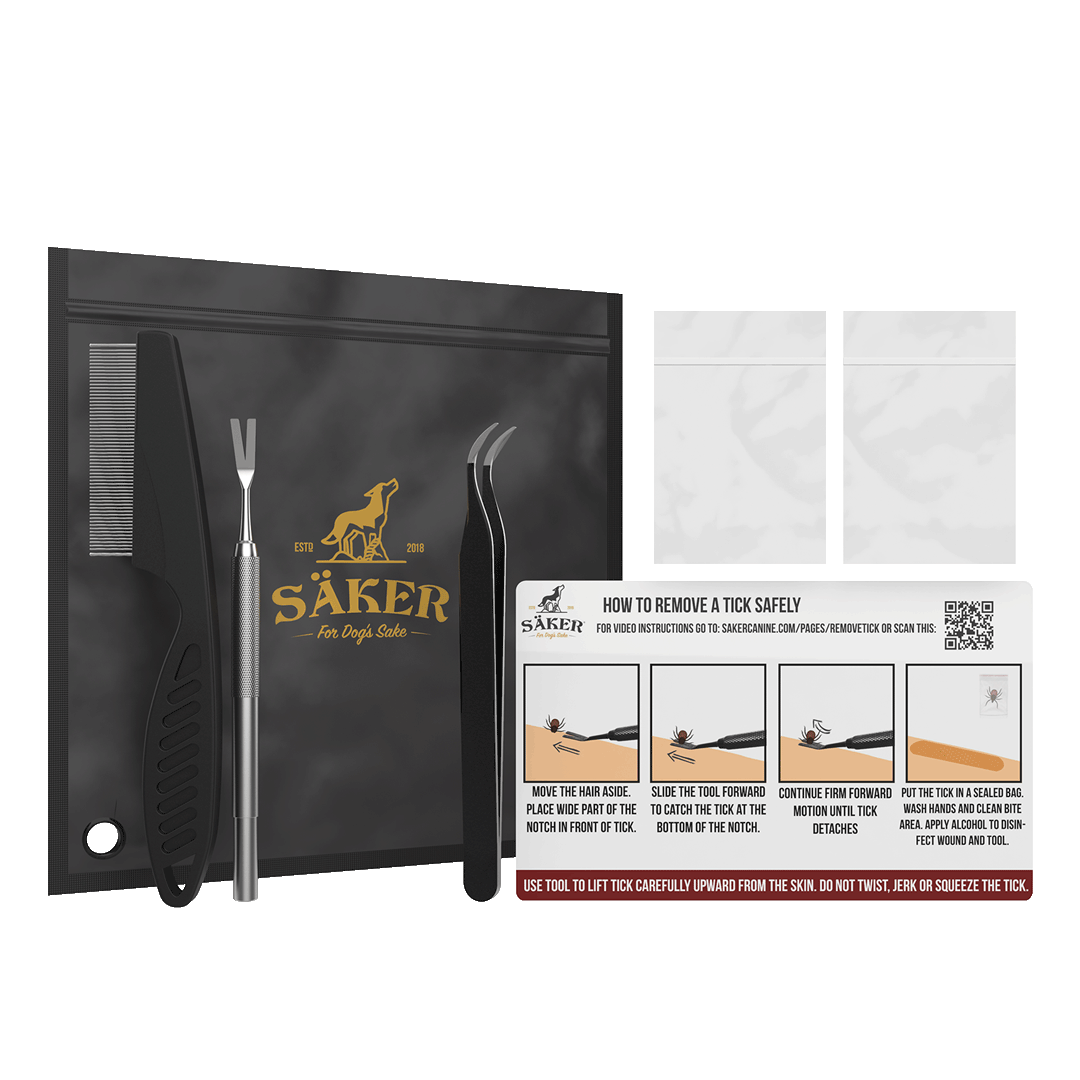
Tick Removal Kit for Dogs
Removing a tick from your dog, it's stressful. So many things can go wrong... That's why having a tick removal kit is so useful. Especially when it is written for beginners. No more guess work and no more risk of Lyme disease.
Tick Buster
OVERVIEW
People are asking
There are many ways for dogs to get bit by a tick.
First, different types of ticks are found in different areas. It can range from grasslands to light wooded areas. Some ticks, such as the brown dog tick can live inside homes, dog pens, etc.
For more details, check this exhaustive list of ticks and places where they're found.
No. Ticks don't fly, hop, run, or even move all that quickly. Depending on the life stage and species, they quest for hosts anywhere from ground level to about knee-high on vegetation, and then tend to crawl up to find a place to bite.
The answer is surprisingly often. Ticks are becoming a bigger problem each year. We suggest checking your dog for ticks anytime you go for an outing in tall grass or dense forest. Most of the time, ticks are hanging on a branch or a tall grass waiting for a host to walk by them.
While it's not impossible to find a tick somewhere else, most ticks will bite your dog on those specific areas.
Of course you can let a vet do it. But at some point in your dog's life, you'll be on a camping trip or somewhere else.
And you won't be able to see a vet in the next 24hours. You'll have to do it. Don't worry, it's easier than it looks.
You could, but it's better to use tools designed for the job.
Why?
Well, when removing the tick, using the wrong tools could put pressure on the tick's belly. Which would lead it to regurgigate the diseases from its gut into your dog.
Is it bad? Should I be concerned?
This is something that concerns many people but it is just not possible for ticks to 1) continue living once they have been ripped in two; and 2) for them to embed any more than their mouthpart into your skin.
Eventually this will be pushed out much like a splinter would be.
You can simply put it in a sealed ziplock bag. This way, you'll be able to safely look at it and try to identify it. Once the tick is secure, it won't be too long before it dies anyway (from extreme dryness). Personally, we would keep the ziplock bag around. If there are no symptoms or other consequence that develop, say within 2-3 months of the bite, you could just discard the tick card or baggie in the trash.
You can always send it to be tested if you are concerned about transmission/potential infection.










 will be offered in the last tab (payment)
will be offered in the last tab (payment)





